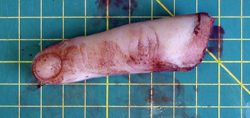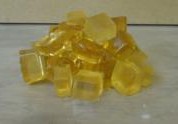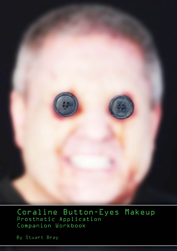What is the best way to learn prosthetics and makeup effects?
This is one of the most common questions asked, so I figured a frank and honest post dedicated to it would be worthwhile.
First up, lets be clear.
Makeup courses are not the same as apprenticeships which, sadly, are almost non existent nowadays. Apprenticeships in a makeup department were not easily found but were long term, studio based affairs. It meant that a trainee makeup artist spent a long time honing their skills gradually in the job under supervision of a working makeup artist.
Makeup effects were part of the job done by a makeup artist who also learned hair, straight makeup and consequently were just a part of a much more thorough training. You learned and worked in the real environment and you sank or swam – plain and simple.
Roll the clock forwards and the studio system has changed enough so that full time positions are no longer standard. Almost everyone is a self-employed freelancer and makeup effects have become so sophisticated that they have separated into a different trade altogether which has spawned new training industries.
Nowadays it essentially boils down to three main categories of training. Education systems obviously vary across the world but the essence of these categories remain essentially the same.
- Academic or ‘certified’ qualification level
(usually longer term)
- Private courses & tuition
(usually short term)
- Self taught through books, DVD’s and online sources
(usually long term & ongoing)
Which is best? To be honest I think they all are able to do the job – but as you will see, there is a far more important element than where or how to train which has a much greater influence on the outcome of any scheme of education as you will see.
Without it, all the training in the world means nothing.
____________________________________________
1. Academic/Certified Courses
These courses (sometimes up to degree level) usually offer full-time training over a long time period allowing a great range of material to be covered.
- Usually run by big institutions, they are stable and secure learning environments, and teaching staff are accountable and usually very passionate about the subject. They may have large groups but usually have assisting staff to cope and often get guest lecturers to help support the learning. Larger institutions are also more likely to have better disability support structures in place.
- Sometimes prosthetics and makeup effects may be a small part of an otherwise exhaustive training programme with period, hair & wigs as well as fashion and skin care/cosmetology etc.
- The course content may be associated with a much larger governing body which can make it a slow ship to turn around – can they respond rapidly to developments in materials and techniques? It all depends on who actually gets to set and update the curriculum, and how much influence or approval they need to make the changes.
- Also, if you need to travel or relocate to a good school, the longer duration of your travel or accommodation needs to be factored into the equation. Two or three years of training gives you a lot of time to learn and practice, but you will need to support yourself during this time. If you work, it will need to be outside of college time and not affect your studies.
____________________________________________
2. Private courses & tuition (short term)
Private courses are spared the red tape of larger institutions and can usually move more freely to accommodate newer techniques and materials.
- They are not usually ‘certified’ by governing bodies and as a result are ships which can turn around much faster and respond to industry changes and developments.
- The perceived value of a lack of certification by a governing body can seem like a negative – yet the true measure of your ability will always be the standard of the work rather than a certificate.
- This doesn’t mean every private course is any good or worth doing – it always pays to research. Find out who is taking the class, what training or credits they have relevant to the field they specialise in.
- Speak to current or past students and see what they have to say about their experience and give yourself time to weigh up the facts and feelings you accumulate from your research. Be clear about what the course offers you and how it will deliver.
- Private courses are not usually cheap but in exchange can supply intense, short bursts of training which are specific and very concentrated. A lot can be learned in a short space of time and you will often have good student/tutor ratios and attention. You also won’t need a long term relocation as with a long course, and you may be able to arrange a payment schedule to pay off the fees.
- As private courses will succeed or fail on the intake of fee paying students, they need to be competitive and work hard to maintain their reputation. Like I said, there are good and bad so make sure you visit more than one, get a feel for the places and consider what they can offer you.
- Sit in on some of a class if possible and watch how it goes on. If you are going to be spending substantial amounts of money and time doing a course, it is not unreasonable to test drive the place for half an hour.
- Lastly, make sure you look into the reputation and longevity of a place. Research the history of the course or the people running it. If you cannot find traces of the place or the people on the internet then be wary of how much they can help you.
____________________________________________
3. Self Taught (Books, DVD’s & Online)
It has been argued that simply spending the money and time you would spend on a course could be sunk into some materials, a good book or DVD and a couple of months of trial and error instead.
- It may take longer, you’ll make mistakes and you may lose heart but you will also find out whether you really love it or not.
- Would this act as a true substitute for a paid course? It depends on your personality and how you learn best.
- Far more important than what method of learning you use is your motivation for wanting to do it in the first place. Simply put, you need to love doing it, and enjoy the processes – not just the end result.
Without that inbuilt desire to do it, then being presented with the skills and techniques will not actually make any training worthwhile at all.
Like any career, there is the ‘on paper’ route but this must be supported by a realistic and knowledgeable approach to the industry to which it pertains. By far, the best candidates I have seen are always people who just got their hands dirty and tried something.
Apprenticeships were granted and you were grateful to be on them – your position within it kept you on your toes as poor effort on your part meant you were out…just like a real job. When people pay to do a course, there can be a feeling of attendee entitlement which isn’t conducive to the good work ethic essential for any professional career.
You see, there are plenty of people in the world who attend a course of some kind and expect the knowledge to pour itself into their heads which will make everyone beat a path to their door.
That just isn’t a realistic expectation.
You can be ‘certified’ and ‘qualified’ by a governing body and still be utterly unemployable. After all, it is not so much about being generically ‘creative’ or ‘artistic’ so much as being able to consistently function within a commercial industry.
- Making prosthetics can be messy, smelly and often takes place in industrial units or workshops far from the supposed glamour of a makeup trailer. If this kind of environment doesn’t float your boat then be warned.
- Makeup applications often start very early in the morning, can take many hours to do and may require you to get a to a freezing cold field in the middle of nowhere if that is the shooting location.
None of this is evident in the finished makeup, much in the way a delicious meal doesn’t reveal the skill, preparation, cooking and washing up afterwards.
And like a chef, you need to love food and cooking in order to do it well. You wouldn’t wait until you owned a restaurant before you started cooking – you would just do it all the time because it’s what you loved.
Many successful makeup effects artists working now are largely self taught, and this probably has more to do the pioneering ‘have a go’ spirit required to do that kind of work.
I think this single factor alone is the deciding element as to whether ANY kind of training will actually be worthwhile. People who really love it will just start doing it simply for it’s own sake. Because they loved it, they rode out the failures, practiced all they could, looked for all the information they could and gradually improved.
Over time they then built on that enthusiasm and plugged very specific gaps in their knowledge which they knew needed filling because they understood what was missing, and could then more easily seek it out from either a book, DVD, forum, person or course.
I care passionately about makeup effects (and so do those that actually do it) and I make no secret of it. The simple truth is that is no one right way – and even if there was (which there isn’t) it doesn’t necessarily mean that it would turn you into Rick Baker* or that you will be employable.
If there is someone who has been experimenting, practicing and trying stuff out for years then it is fair to say that they will be much more likely to succeed in the long run – and frankly they deserve to. They will also be much more likely to appeal to workshop bosses who are themselves self motivated and obsessed individuals who worked hard to get to where they are.
If this isn’t a long run for you, then understand that there are plenty of people for whom it is and that gives them an edge that an expensive course simply cannot create.
*(Incidentally, if you have never heard of Rick Baker, Dick Smith, Steve Johnson, Rob Bottin, KNB, Caglione & Drexler, John Chambers, Steve Wang, Screaming Mad George, Kevin Haney, Stan Winston, Greg Cannom, Nick Dudman, Stuart Freeborn, Todd Masters, Matthew Mungle, Conor O’Sullivan, Mike Elizalde, Mark Shostrom, Christien Tinsley, Christopher Tucker, the Westmores, Gordon Smith or Neill Gorton (to name but a few) then I suggest a little research is required before spending a single penny on anything).
All material, images and text © Stuart Bray 2011
 Make this finger – about an hour of work with silicone and gelatine!
Make this finger – about an hour of work with silicone and gelatine!

 Torn Face Zombie – simple & cheap!
Torn Face Zombie – simple & cheap! I don’t know who came up with that, but it absolutely holds true. If something is required to be good and you want it quick, it inevitably is not cheap. If you want it quick and cheap then it probably wont be very good.
I don’t know who came up with that, but it absolutely holds true. If something is required to be good and you want it quick, it inevitably is not cheap. If you want it quick and cheap then it probably wont be very good.



